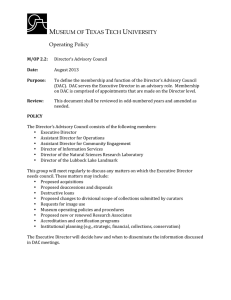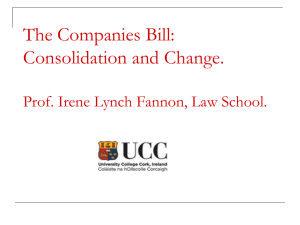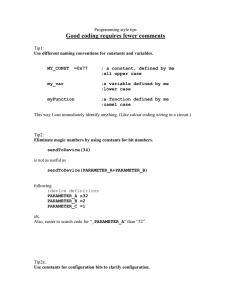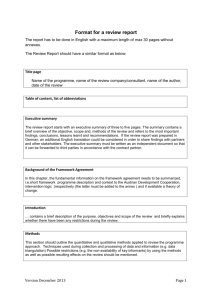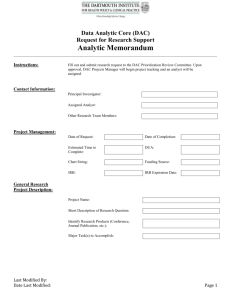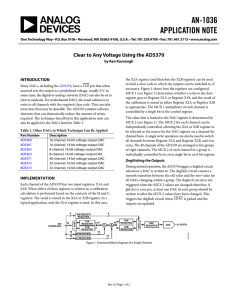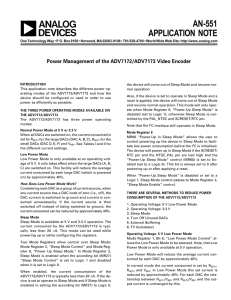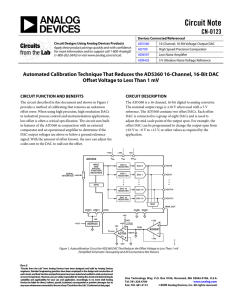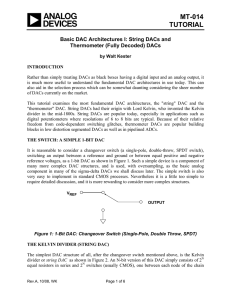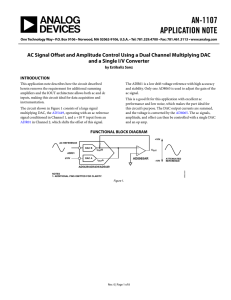Mini Tutorial MT-208
advertisement
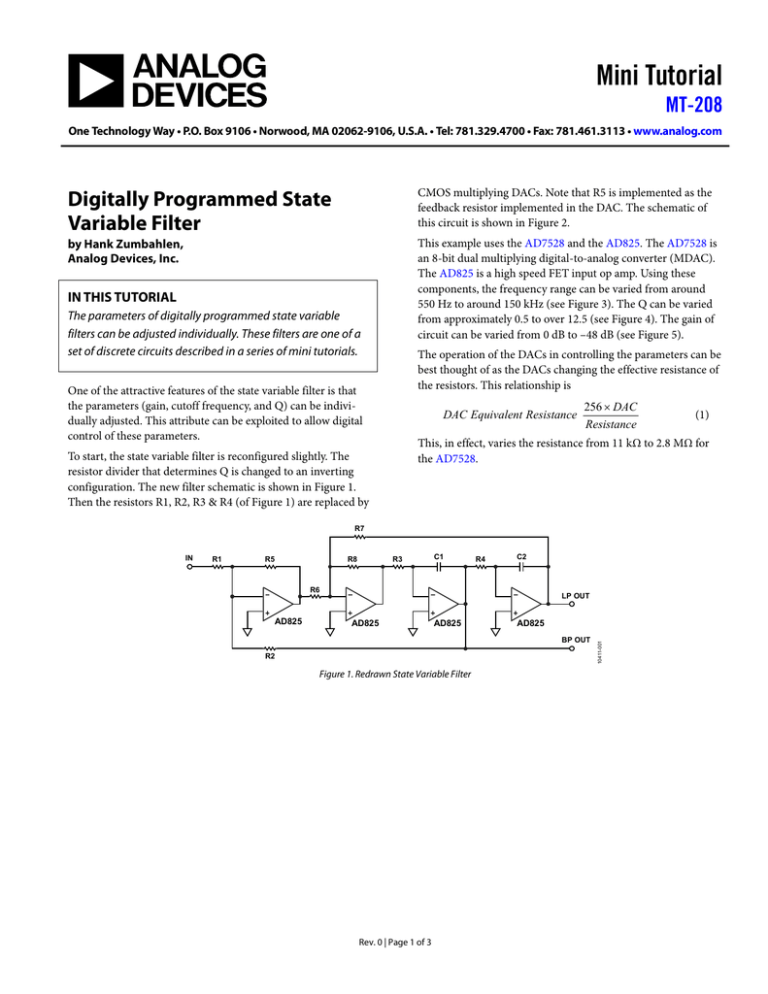
Mini Tutorial MT-208 One Technology Way • P.O. Box 9106 • Norwood, MA 02062-9106, U.S.A. • Tel: 781.329.4700 • Fax: 781.461.3113 • www.analog.com Digitally Programmed State Variable Filter CMOS multiplying DACs. Note that R5 is implemented as the feedback resistor implemented in the DAC. The schematic of this circuit is shown in Figure 2. by Hank Zumbahlen, Analog Devices, Inc. This example uses the AD7528 and the AD825. The AD7528 is an 8-bit dual multiplying digital-to-analog converter (MDAC). The AD825 is a high speed FET input op amp. Using these components, the frequency range can be varied from around 550 Hz to around 150 kHz (see Figure 3). The Q can be varied from approximately 0.5 to over 12.5 (see Figure 4). The gain of circuit can be varied from 0 dB to –48 dB (see Figure 5). IN THIS TUTORIAL The parameters of digitally programmed state variable filters can be adjusted individually. These filters are one of a set of discrete circuits described in a series of mini tutorials. The operation of the DACs in controlling the parameters can be best thought of as the DACs changing the effective resistance of the resistors. This relationship is One of the attractive features of the state variable filter is that the parameters (gain, cutoff frequency, and Q) can be individually adjusted. This attribute can be exploited to allow digital control of these parameters. DAC Equivalent Resistance 256 × DAC Resistance This, in effect, varies the resistance from 11 kΩ to 2.8 MΩ for the AD7528. To start, the state variable filter is reconfigured slightly. The resistor divider that determines Q is changed to an inverting configuration. The new filter schematic is shown in Figure 1. Then the resistors R1, R2, R3 & R4 (of Figure 1) are replaced by R7 R1 R8 R5 R3 C1 R4 C2 R6 AD825 LP OUT AD825 AD825 AD825 BP OUT R2 Figure 1. Redrawn State Variable Filter Rev. 0 | Page 1 of 3 10411-001 IN (1) MT-208 Mini Tutorial IN R1 R2 LP OUT R3 VIN RREF HP OUT CS WR AD7528 IOUT D0 … D7 AD825 AD825 ... LEVEL CONTROL DAC A R5 1kΩ R6 1kΩ C2 Q CONTROL ... C1 DAC A D0 … D7 DAC A WR AD7528 IOUT VIN RREF CS CS AD7528 DAC A VIN RREF WR AD7528 IOUT IOUT CS D0 … D7 VIN RREF D0 . . .D7 AD825 AD825 ... ... FREQUENCY CONTROL BP OUT 10411-002 WR Figure 2. Digitally Controlled State Variable Filter 10 0 0 AMPLITUDE (dB) AMPLITUDE (dB) –20 –40 –10 –20 –40 –60 –80 0.1 0.3 1.0 3.0 10.0 30.0 FREQUENCY (kHz) 100.0 –80 0.1 1000.0 300.0 50 40 20 10 0 10411-004 AMPLITUDE (dB) 30 –20 0.1 0.3 1.0 FREQUENCY (kHz) 3.0 0.3 1.0 FREQUENCY (kHz) 3.0 10.0 Figure 5. Gain Variation vs. DAC Control Word Figure 3. Frequency Response vs. DAC Control Word –10 10411-005 10411-003 –60 One limitation of this design is that the frequency is dependent on the ladder resistance of the DAC. This particular parameter is not controlled. DACs are trimmed so that the ratios of the resistors, not their absolute values, are controlled. In the case of the AD7528, the typical value is 11 kΩ. It is specified as 8 kΩ minimum and 15 kΩ maximum. A simple modification of the circuit can eliminate this issue. The cost is two more op amps (see Figure 6). In this case, the effective resistor value is set by the fixed resistors rather than the DAC's resistance. Since there are two integrators, the extra inversions caused by the added op amps cancel. 10.0 Figure 4. Q Variation vs. DAC Control Word Rev. 0 | Page 2 of 3 Mini Tutorial MT-208 IN R C OUT VIN RREF CS REFERENCES WR AD7528-4 IOUT D0 … D7 AD825 Zumbahlen, Hank. Linear Circuit Design Handbook. Elsevier. 2008. ISBN: 978-7506-8703-4. AD825 10411-006 ... CONTROL BUS DAC A used a digital pot in place of the MDACs. The difference is that instead of increasing the effective resistance, the value of the pot would be the maximum resistance. Figure 6. Improved Digitally Variable Integrator Note that multiplying DACs could be replaced by analog multipliers. In this case, the control would obviously be an analog rather than a digital signal. One could just as easily have REVISION HISTORY 4/12—Revision 0: Initial Version ©2012 Analog Devices, Inc. All rights reserved. Trademarks and registered trademarks are the property of their respective owners. MT10411-0-4/12(0) Rev. 0 | Page 3 of 3
